2025 BYD Shark 6 Review: Plug-In Hybrid Ute Tested – Worth the Hype?
The 2025 BYD Shark 6 has landed in Australia as the first plug-in hybrid (PHEV) ute on the market, promising electric efficiency, rugged utility, and a jaw-dropping $58,000 starting price. With competitors like the Ford Ranger PHEV and GWM Cannon Alpha on the horizon, this Chinese-built contender is turning heads. As a car reviewer with over a decade of experience testing everything from sports cars to utes, I’ve put the Shark 6 through its paces—on-road, off-road, and even airborne—to see if it lives up to the buzz. Here’s my in-depth take, packed with real-world insights, pros, cons, and performance data.

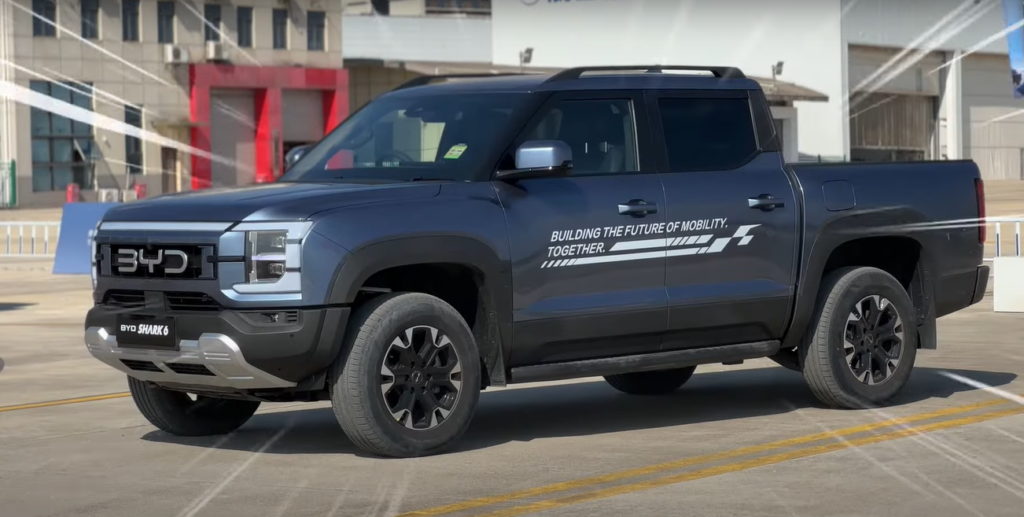
What Is the 2025 BYD Shark 6?
The BYD Shark 6 blends electric and petrol power in a bold new package. It’s a dual-cab ute with a 1.5L turbo petrol engine acting as a generator (and sometimes direct drive) alongside two electric motors—one per axle—for all-wheel drive. Its 30 kWh battery offers a claimed 100 km electric range (NEDC), though real-world figures hover closer to 70-80 km. Total output? A hefty 321 kW (430 hp) and 650 Nm, making it a powerhouse in its class.
At 5,457 mm long and 1,971 mm wide, it’s bigger than a Ford Ranger (by 100 mm in length and 50 mm in width), with a wheelbase matching the Ranger’s for spaciousness. Priced from $58,000 (excl. on-roads), it’s a single, fully-loaded trim—think luxury and tech at a budget-friendly tag. But does it deliver? Let’s break it down.
Exterior Design: Tough and Modern
The Shark 6’s look is a mix of rugged and futuristic:
- Front End: C-shaped LED headlights and a bash plate echo the Ford Ranger Sport, but the bold grille and sleek lines carve its own identity.
- Wheels: 18-inch alloys with chunky 265/65 Continental CrossContact tires—tall sidewalls hint at comfort and off-road potential.
- Sides: Integrated side steps aid entry (it’s high off the ground), while its sheer size screams presence.
- Rear: A full-width LED tail light bar—a rare ute feature—adds a premium touch, paired with a modern tailgate button (though only one damper assists the drop).
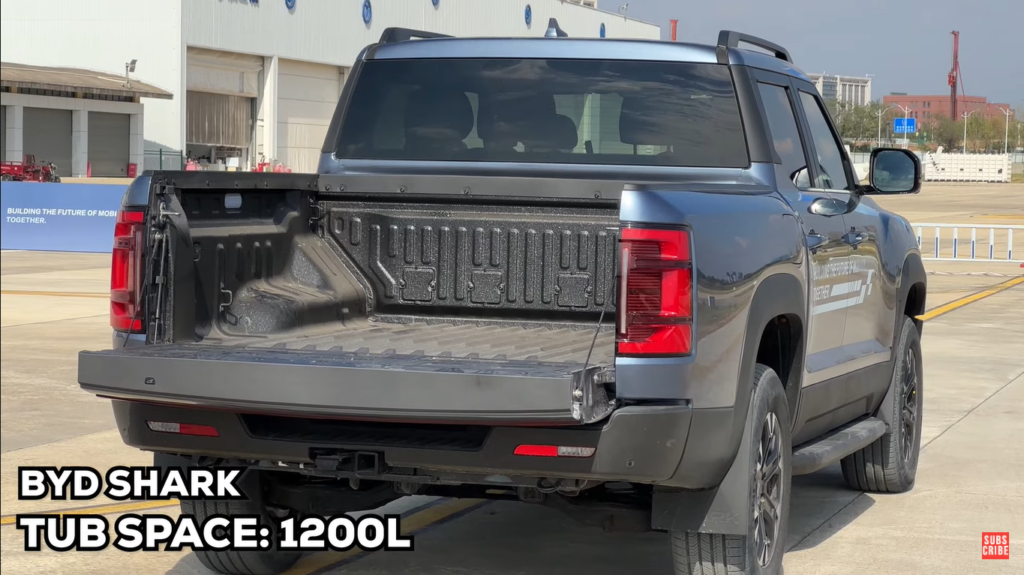
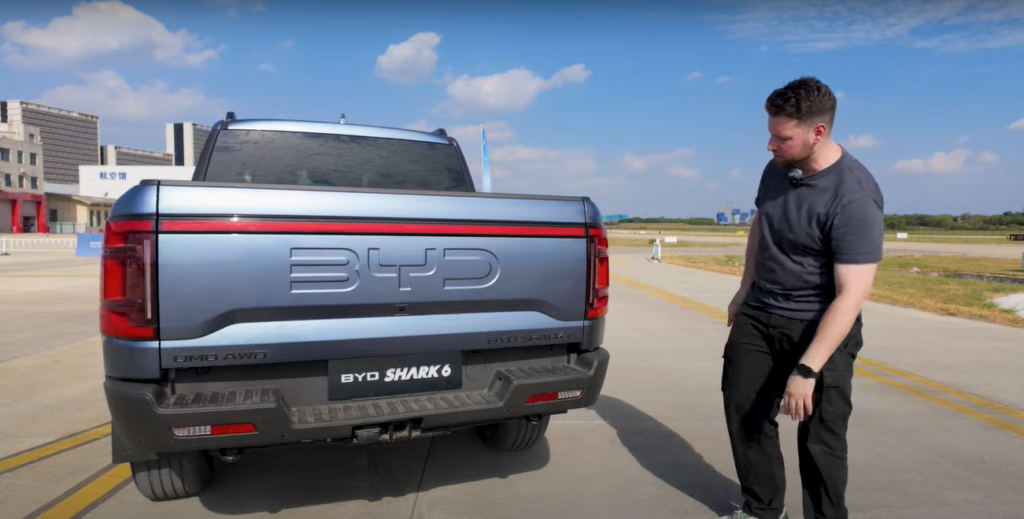

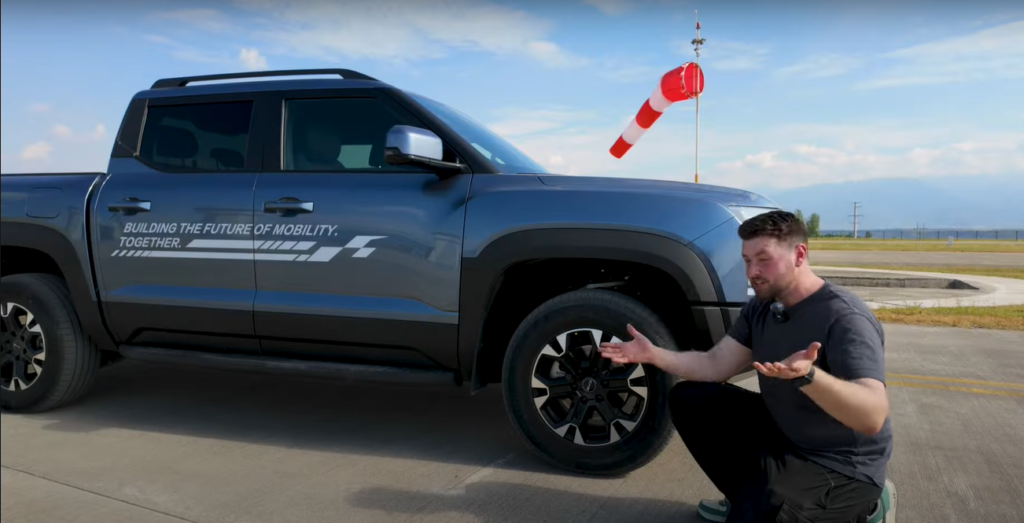

It’s not revolutionary, but it’s distinctive enough to stand out among Toyota Hiluxes and Isuzu D-Maxs. I’ve parked plenty of utes, and this one’s showroom appeal is undeniable—perfect for buyers wanting style with their substance.
Towing Capacity
The Shark 6’s utility shines, though it’s not perfect:
- Tray: Big for the class, with a manual light (some rivals auto-activate) and three 230V/10A outlets—ideal for tools or camping.
- Payload: Rated at 835 kg, it lags behind the Ranger’s 1,000+ kg. Towing tops out at 2,500 kg (braked)—decent but not class-leading.
- Charging: A CCS2 port accepts up to 55 kW DC fast charging (real-world test hit 62 kW), juicing from 20-80% in about 25-30 minutes.
It’s a workhorse for light-duty needs, but heavy haulers might eye diesel rivals. The tray’s size and power options, though, make it a versatile pick for tradies or weekend warriors.
BYD Shark 6: Electric Platform Meets Combustion Power
With 321 kW on tap, the Shark 6 promises thrills. Here’s how it performs:
- 0-100 km/h:
- Battery at 70% (Hybrid Mode): 6.94 seconds
- Battery at 54 km (EV Mode): 7.03 seconds
- Battery Flat (Hybrid Mode): 6.94 seconds
- Test Notes: I ran multiple sprints on a closed road—times are consistent, showing the petrol engine compensates well when the battery’s low.
- Driving Feel: Electric motors kick in instantly, but the petrol engine lags, creating a disjointed throttle response. Full-throttle delays (power lingers after lifting off) dull the excitement.
- Efficiency: Official claim is 2L/100 km, but real-world tests showed 8.7-15.5L/100 km without regular charging—typical for PHEVs once the battery’s drained.
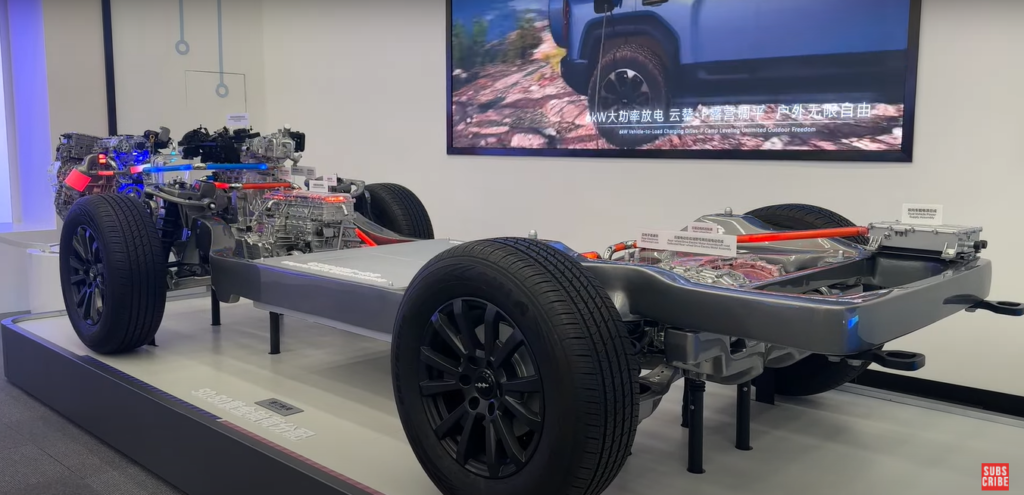
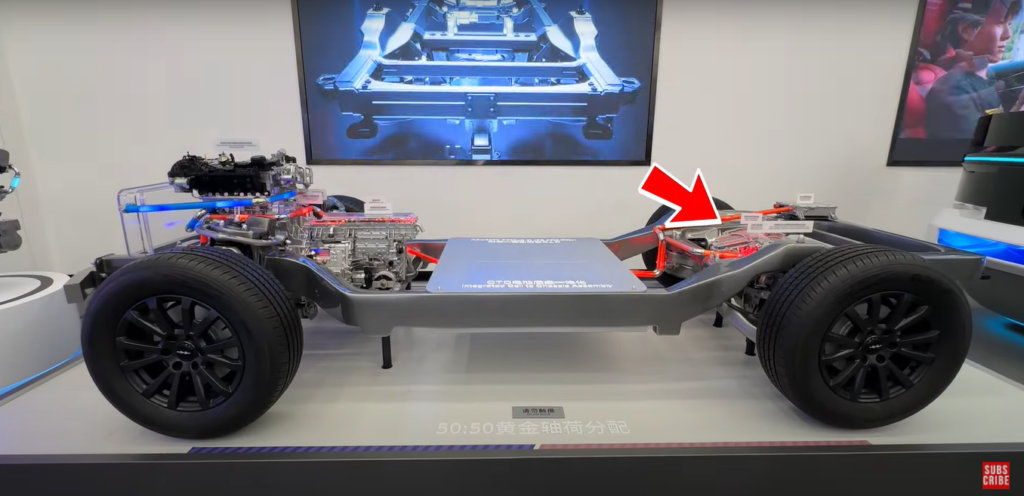
It’s quick—faster than most diesel utes—but the heavy 2,710 kg curb weight blunts the 321 kW punch. I’ve timed everything from Rangers to Hiluxes, and the Shark 6’s raw power impresses, even if calibration needs work.
Off-Roading Capabilities: A True Utility Beast
When it comes to off-road performance, the Shark 6 truly excels. Built on an electric-first platform, it incorporates technologies that make it both powerful and agile, even in challenging terrains. The truck features a coil-sprung suspension system that provides excellent wheel articulation, making it more stable and capable of handling uneven terrain.
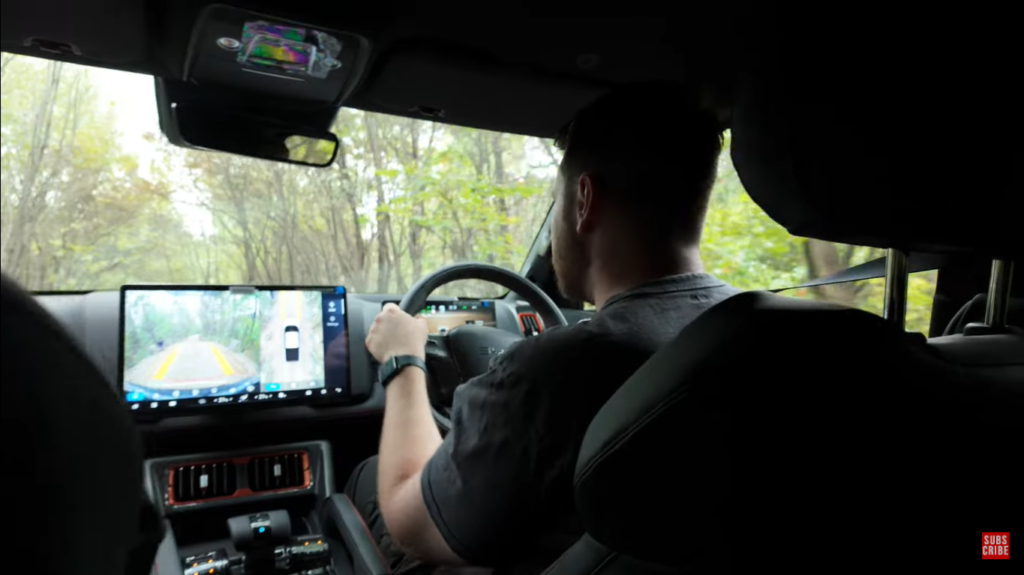
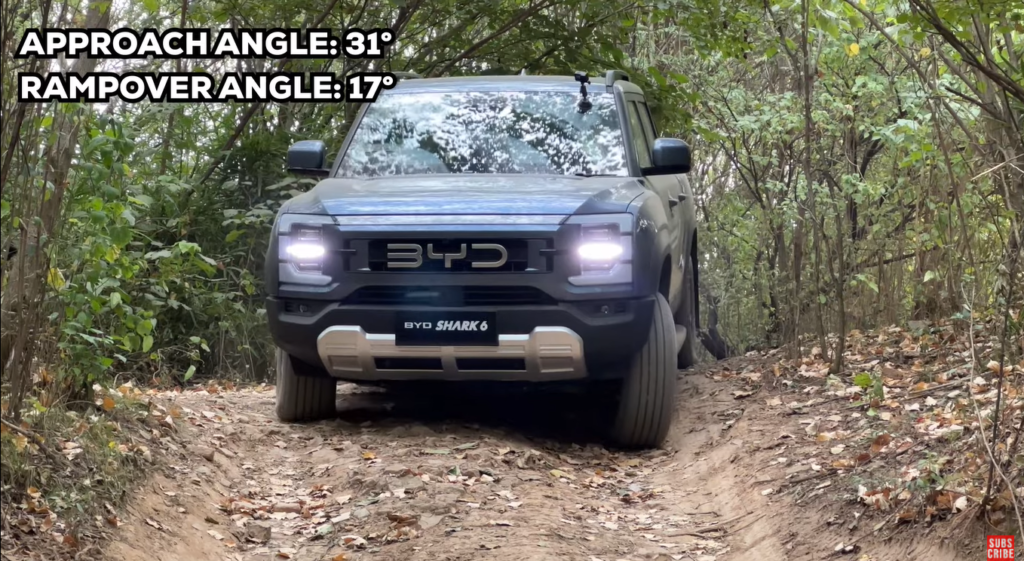
Off-Road Specs of the BYD Shark 6:
| Feature | Specification |
|---|---|
| Approach Angle | 31° |
| Ramp Over Angle | 17° |
| Departure Angle | 19.5° |
| Ground Clearance | 230 mm |
| Hill Climbing Ability | 60% |
- Terrain Modes: The BYD Shark 6 offers three drive modes: Sand, Mud, and Gravel. These modes optimize traction and power distribution to suit the terrain, allowing the truck to excel in various off-road conditions.
- Traction Control: The intelligent traction control system can send up to 100% of power to the rear wheels when necessary, ensuring that the vehicle doesn’t get bogged down even in challenging conditions.
In a setup track test in China, the Shark 6 proved its mettle by navigating steep inclines and deeply rutted paths with ease. The off-road package is robust, and thanks to 5 layers of battery protection, even the most rugged terrain poses no threat to its electric components.
Interior: Spacious and Tech-Loaded
Step inside, and the Shark 6 impresses with quality and space:
- Dashboard: A massive 15.6-inch touchscreen dominates, with a simple layout, home button, and apps galore. It’s responsive, though climate controls require menu-diving—a gripe I’ve had with many modern vehicles.
- Materials: No scratchy plastics here—soft-touch surfaces, bronze vent trim, and a premium feel rival pricier utes.
- Storage: A huge center console bin, 50W wireless charger (with cooling!), and a 230V outlet in the rear. Door bins and seatback pockets are generous too.
- Seating: Up front, there’s ample adjustment and a natural driving position. The rear? Class-leading space—no transmission tunnel means flat floors and legroom that beats the Ranger. Add reclining seats, twin climate vents, and LED mood lights for comfort.
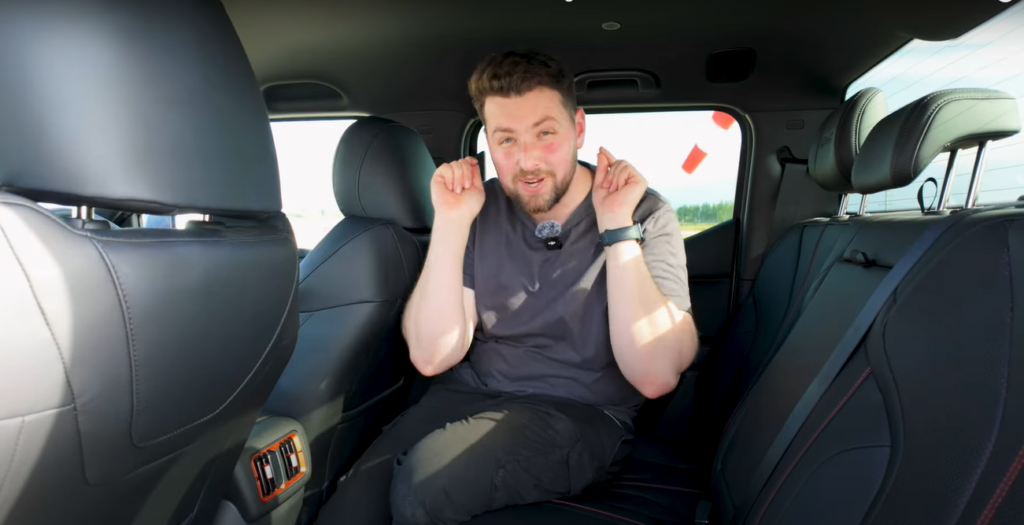
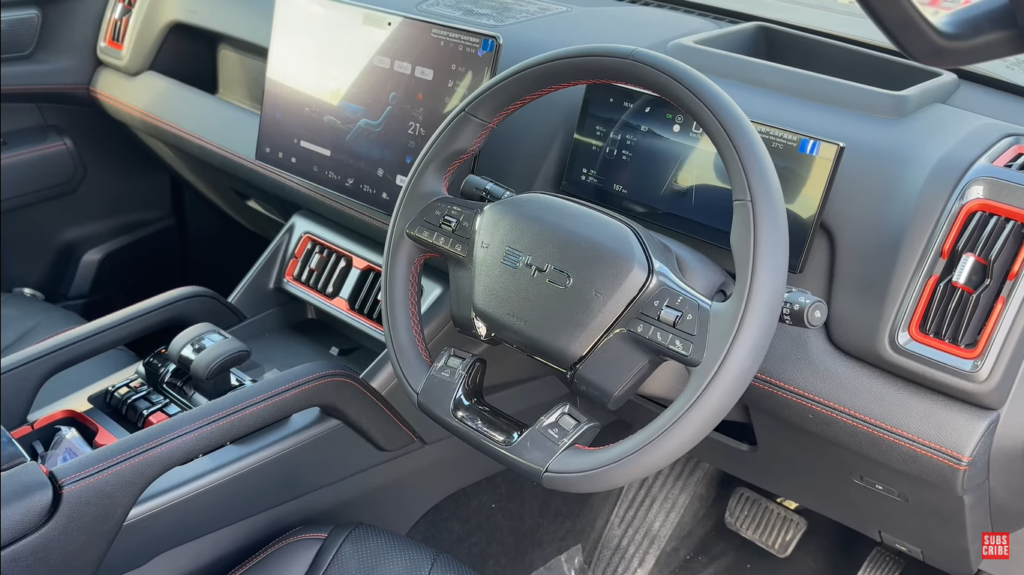
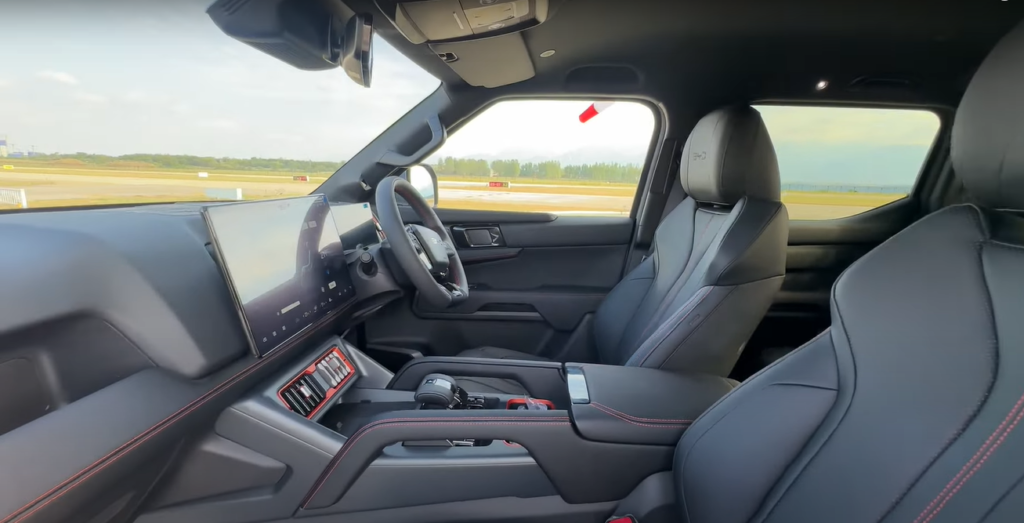
The digital cluster is basic—symbols are scattered, taking time to decipher—but it’s functional with tire pressure monitoring and fuel data. Apple CarPlay and Android Auto require cables, a minor letdown. Compared to a Hilux, it’s night-and-day better; even against the Ranger, it holds its own for practicality.
Ride and Handling: A Tuning Misstep
The Shark 6’s ride quality is its Achilles’ heel:
- On-Road: Stiff suspension picks up every ripple—doors rattle, seatbelts slap the B-pillar. At 36-38 PSI (per the placard), it’s still jarring on patchy country roads. A mate (John, a fellow tester) agreed: it feels like a pre-production tune, with dampers overreacting to small bumps.
- Steering: Numb and heavy, lacking the feedback of a D-Max or Ranger. Comfort mode doesn’t soften the heft.
- Off-Road: On dirt, it’s rigid—corrugations shake the cabin. A hill climb test (steep, mogul-laden) failed across all modes (Mountain, Sand, Muddy)—no low-range and poor throttle calibration stalled it.
I’ve driven utes across Australia’s roughest tracks, and this one’s firmness stands out—negatively. BYD’s rigid chassis is a solid base, but the suspension needs local tuning for our notoriously crap roads.
Off-Road Test: Hill Climb Breakdown
On a familiar dirt hill (steep, with diagonal moguls), the Shark 6 struggled:
- Modes Tried: Mountain, Sand, Muddy, Snow, Sport—all failed. Traction control cut power too aggressively; disabling it spun wheels without progress.
- Comparison: A D-Max (with rough terrain mode) and Prado (low-range) conquered it. The Shark’s independent suspension didn’t flex enough, and electronics couldn’t compensate for no low-range.
If off-roading’s your game, stick to diesel utes with proven setups.
Jump Test: Surprisingly Solid
I tested the Shark 6 over a small hump at 10, 20, and 30 km/h:
- Result: Firm suspension absorbed landings well—no bottoming out, despite the 2,710 kg weight. It caught air at 30 km/h and settled smoothly.
- Comparison: D-Max and Hilux handle this fine; softer utes like the GWM Cannon XSR falter.
It’s not built for jumps, but the stiff tune shines here—a rare win.
Safety and Tech: Loaded, but Overzealous
The Shark 6 packs modern safety:
- Features: Lane-keep assist, driver monitoring camera, surround-view cameras, adaptive cruise control—all standard.
- Gripe: The driver camera beeps excessively (e.g., glancing at the screen triggers it). Lane assist tugs the wheel annoyingly—both can be disabled, thankfully.
The 360-degree camera is stellar—crisp and detailed, outshining many rivals. Tech’s a strong suit, but safety calibration needs finesse.
BYD Shark 6 vs. Rivals
| Feature | BYD Shark 6 | Ford Ranger PHEV | Toyota Hilux |
|---|---|---|---|
| Price (AUD) | $58,000+ | ~$70,000+ (est.) | $55,000+ |
| Powertrain | PHEV, 321 kW | PHEV, ~200 kW (est.) | Diesel, 150 kW |
| Electric Range | 100 km (70-80 real) | ~50 km (est.) | N/A |
| Payload | 835 kg | ~1,000 kg (est.) | 1,000 kg |
| Ride Comfort | Harsh | Balanced (est.) | Firm but composed |
| Off-Road | Limited (no low-range) | Strong (est.) | Proven |
The Shark 6 undercuts rivals on price and power, but trails in payload and off-road prowess.
Verdict: A Promising First Crack
The 2025 BYD Shark 6 is a bold debut—affordable, powerful, and packed with luxury. Its interior space, tech, and showroom appeal are class-leading, and the PHEV setup shines for city commuters who charge regularly. But the harsh ride, numb steering, and off-road struggles (no low range, poor calibration) hold it back. I’ve tested utes across terrains, and while this one’s a stellar first effort, it needs refinement—especially for Australia’s rough roads.
Who’s It For? Urban buyers or light-duty tradies who’ll charge it often. Serious off-roaders or heavy haulers should look elsewhere—Ranger or Hilux still rule there. BYD can fix this with tuning; until then, it’s a mixed bag. What’s your take? Comment below and subscribe for more honest reviews!
The BYD Shark 6 offers an electric-only range of 70 km and a combined range of 800 km thanks to its hybrid-electric powertrain.
The Shark 6 can accelerate from 0-100 km/h in 5.99 seconds, making it one of the fastest pickup trucks in its class.
The Shark 6 comes with a 31° approach angle, 230 mm ground clearance, and specialized terrain modes for sand, mud, and gravel, making it highly capable in challenging off-road conditions.

